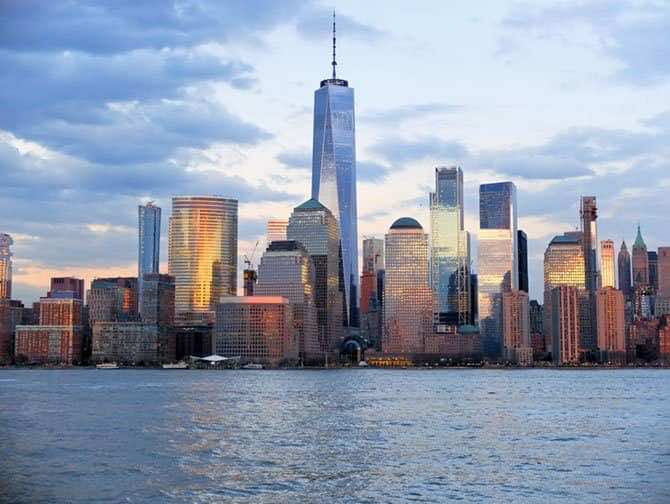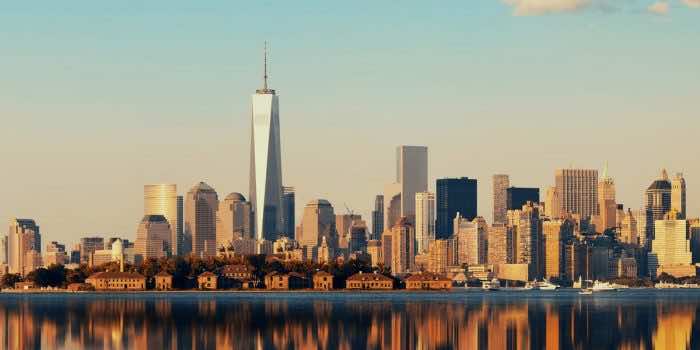One World Trade Center is the tallest tower in America and also the tallest in the western hemisphere, while it is the third tallest building anywhere in the world. However, that itself is not its major claim to fame, the fact that it is built on the land where the former World Trade Center Twin Towers were constructed is of supreme importance, both to how it has been designed and how it is perceived today.
One World Trade Center fits seamlessly into the northwest corner of the World Trade Center site, on land claimed from the Hudson River over centuries of development in Manhattan. The site, several blocks east of the river and in the heart of the financial district, will ultimately house more than ten million square feet of commercial development in five towers, a performing arts center, 500,000 square feet of retail, a transportation hub, and, at its center, the National September 11 Memorial & Museum. The transportation hub connects to multiple points of the New York Subway. The tower itself is primary a commercial building with office space of about 269,500m2, two observation decks, first class restaurants and the spire on top. The low-level lobbies include approximately 5,110m2 of commercial space and are connected to an extensive network of transport including 13 subway lines, PATH trains to New Jersey and possibility of future connections to Long Island and airports.

The tower rests on a massive square podium but as it rises up from the podium its side are chamfered inwards that transforms the square into eight individual isosceles triangles. This creates a crystalline form that directs and redirects light all throughout the tower as the user moves through it and as weather and light conditions change. One World Trade Center features a hybrid structure comprised of a high-strength concrete core surrounded by a perimeter moment frame of steel. Paired with the massive concrete shear walls of the core, the steel frame adds rigidity and structural redundancy. Both bolted and welded together for maximum connection strength. The tower’s tapered, aerodynamic form reduces exposure to wind loads while simultaneously reducing the amount of structural steel needed.

The finished height of the tower, including the spire was designed to be a symbolic 1776 feet, as a nod to the year of American independence. This alone exhibits the cultural and political, as well as architectural legacy that One World Trade Center has.



